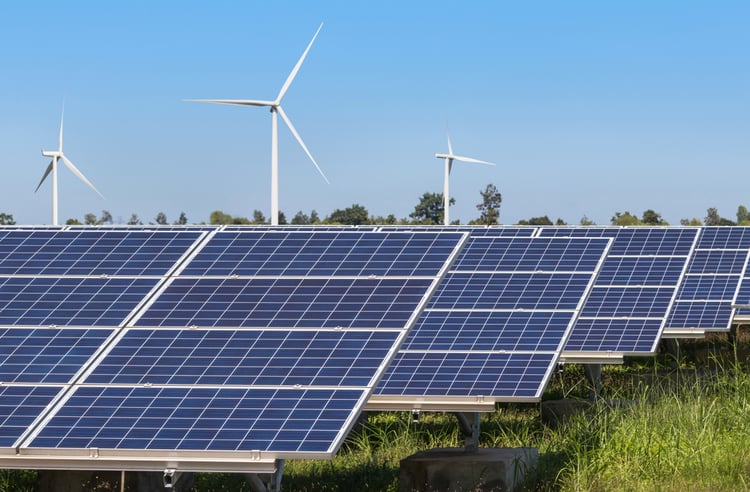How Much Emissions Are Caused by Each Energy Source in a Building?

When the topic of greenhouse gas emissions is discussed, we tend to think about transportation. However, the building sector actually has a higher carbon footprint, and cities like New York are already working to address this issue. Local Law 97 of 2019 will apply emission limits for buildings over 25,000 sq.ft. starting from 2024, based on their occupancy and floor area.
Get a professional energy audit, reduce your utility bills and avoid Local Law 97 penalties.
By understanding the carbon footprint of each energy source, you can reduce emissions more effectively. LL97 of 2019 provides emission factors for the following sources:
- Electricity
- Natural gas
- #2 fuel oil
- #4 fuel oil
- District steam
The law requires you to calculate the emissions caused by all energy sources used in your building. However, these five sources account for the largest share of energy consumption. Here we will rank their carbon footprints from highest to lowest, while discussing some viable strategies to minimize your emissions.
1) #4 Fuel Oil: 75.29 g CO2 Equivalent per kBTU

Among the five main energy sources considered by Local Law 97, #4 fuel oil is the most polluting. Unfortunately, this energy source is still used for space heating and hot water in many buildings. When LL97 penalties come into effect, building owners who still depend on #4 fuel oil will have a hard time staying below their limit. However, there is still time to improve energy efficiency with building upgrades, while switching to cleaner sources.
Another disadvantage of #4 fuel oil is being dependent on scheduled deliveries, which can be interrupted by harsh weather. Steam, electricity and natural gas are all delivered as utility services, which means you no longer have to worry about deliveries.
2) #2 Fuel Oil: 74.21 g CO2 Equivalent per kBTU
#2 fuel oil has a slightly lower environmental impact than #4 fuel oil, and the emissions factor used in LL97 is 1.4% lower. However, referring to #2 fuel oil as a “cleaner” energy source is misleading. For a building owner subject to high penalties, switching to a slightly less polluting source will not have a significant impact.
With #2 fuel oil, you still have the limitation of depending on truck deliveries. There are cleaner energy sources that also offer the convenience of being utility services. If you currently depend on fuel oil for heating, and you need to cut your emissions, consider a high-efficiency natural gas boiler or an electric heat pump.
3) Natural Gas: 53.11 g CO2 Equivalent per kBTU

Natural gas is also a fossil fuel, but its carbon footprint is considerably lower compared with #4 or #2 fuel oil. Another advantage is that natural gas is delivered through a piped connection, and you no longer depend on oil deliveries to keep your building and your water warm during winter. By upgrading to a modern natural gas boiler and improving your building envelope, you can greatly reduce your heating costs and the associated emissions.
However, it would be a mistake to describe natural gas as a clean energy source, even when it has the word “natural” in its name. Building owners might be able to avoid the 2024 emission limits by switching from oil to gas, but more stringent limits will be introduced in 2030. If you want to heat your building with zero emissions, consider an electric heat pump system operated by renewable energy.
4) District Steam: 44.93 g CO2 Equivalent per kBTU
New York City has the advantage of offering steam as a utility service, and it has a lower carbon footprint than the three energy sources described above. However, steam is only available in some parts of NYC, and your building heating system must be designed specifically to use it.
Con Edison relies on cogeneration systems to produce a large portion of its steam, reducing the environmental footprint of this utility service. Buildings who have their own steam boilers have much higher emissions, since they must burn fuel oil or natural gas directly. In that case, you must use the emissions factor for the corresponding fuel - the district steam factor only applies if you use steam directly from the ConEd service.
5) Electricity: Emissions Depend on the Source

There are multiple energy sources that can be used to generate electricity, and the carbon footprint per kilowatt-hour will depend on the source used. For example, if you use coal to generate power, you can expect emissions of over 1,000 g per kilowatt-hour. On the other hand, electricity from solar panels and wind turbines is nearly free of emissions.
Local Law 97 provides an emissions factor of 0.000288962 metric tons of CO2-eq per kWh. This is equivalent to slightly under 289 g CO2-eq per kWh. However, this value only applies for electricity consumed from the grid. If you generate your own power with solar panels or another clean technology, those kilowatt-hours don’t count towards your building emissions limit. This has another implication, for NYC building owners: electric heating is emissions-free if they use clean energy sources.

Michael Tobias
Michael Tobias, the Founding Principal of NY Engineers, currently leads a team of 50+ MEP/FP engineers and has led over 1,000 projects in the US
Join 15,000+ Fellow Architects and Contractors
Get expert engineering tips straight to your inbox. Subscribe to the NY Engineers Blog below.



